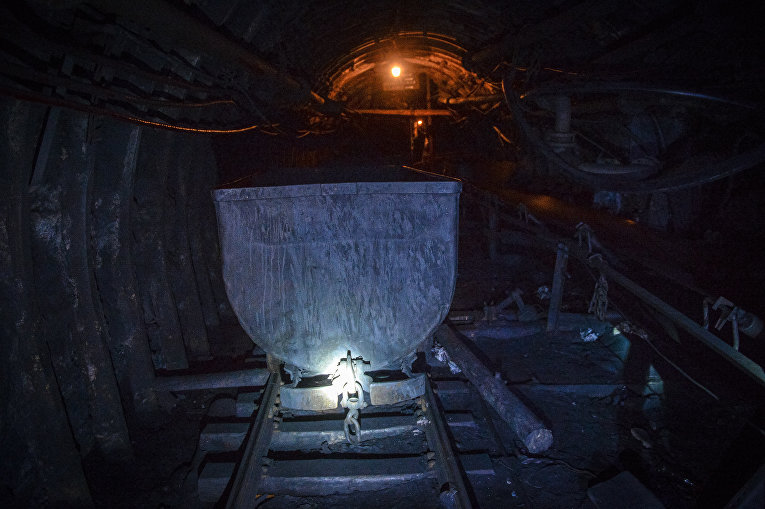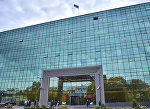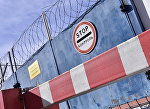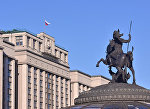This year, Miner's Day was marked by Russian president who said that the Federal Security Service (FSB) would join the efforts aimed at overcoming barriers on the way of increasing coal exports. However, usually law enforcement agencies get interested in coal business for completely different reasons.
The situation with the Inskoy mine in the Kuzbass region is a vivid example of this practice. The mine was on its way to bankruptcy when its employees went on a strike. Regional authorities did their best to prevent a social unrest but were later accused of an attempted raid attack on the mine. RAPSI has studied all the details of this story, the chronology of which was published on Tayga.info website that is closely watching after it.
The reason they try to convict Aman Tuleyev’s deputies
In mid-2015 miners of the Inskoy ran into the geological deviation - a coal seam fracture. The administration of the mine made a wrong decision and, as a result, miners tried to get through the breed for more than a year and a half, destroying equipment and draining financial resources - hundreds of millions of rubles.
By the beginning of July 2016, social tension arose: miners had not been paid for the amount of 2.5 salaries, they had to work when there was not enough space in the mine, the equipment was critically worn and worked at minimum speed, while there was shortage of shovels.
The mine was led to such a poor condition by the management company. Oksana Rybalkina, an investigator of the Kemerovo Investigative Committee of the Russian Federation, “was in slight shock” when she was studying the documents of Inskoy mine and examining the evidence. “In the final balance sheet of 2015... there are more than 2 billion rubles (over $31 million) of accounts payable... by July 2016, there is absolutely no money to pay wages. Even if the mine began to mine coal, it would have to be shipped for free for a year and a half because the mine received the advance payment for the coal supply,” Rybalkina told the court.
A few months before the strike broke out, the administration of the Inskoy mine was instructed by the financial monitoring office of the administration of the Kemerovo region to pay the wage and tax arrears until mid-summer.
But the negligence of the management company led to new problems: failure to secure payments to contractors of the mine provoked new wage arrears, including contractual partners of the mine. In the end, the district department of the Investigative Committee opened a criminal case due to the fact of non-payment of wages.
The miners of the Inskoy refused to go to work on July 8, 2016, demanding the resignation of the administration of the mine and payment of the wage arrears. The administration of the Kemerovo Region had no doubts that this problem could not be solved with “soft” measures.
Social and criminal liability
The participation of regional authorities in conflicts of this kind is a common thing for Russia. Businessmen quite often do not show enough diligence when it gets to the payment of wage arrears.
There was a similar situation before with the Koksovaya-2 mine when the administration of the mine did not pay the debts off to creditors, contractors, employees. Moreover, the administration did not make obligatory payments as well. As a result, a criminal case was opened against the principal of the mine, who was arrested in Moscow and later brought to the Kemerovo region “to reduce social tension”.
It should be noted, it was Russian President Vladimir Putin who said that in such circumstances tough measures in an accelerated mode should be taken. In 2017, when employees of a plant in Nizhny Tagil were not paid their salaries Putin blamed its owners for “disreputable” behavior while Alexander Bastrykin, the chairman of the Investigative Committee, dismissed the chief of the department of the regional branch of the Investigative Committee for the delayed opening of a criminal case.
The decision of Aman Tuleyev, then-governor of the Kemerovo region, to send his deputies Alexander Danilchenko and Alexey Ivanov to the Inskoy mine, looks reasonable in this context. Yevgeny Khlebunov, chief of the coal industry department of the regional government, Yevgeny Stepin and Elena Troitskaya, officials of the administration of the region, and investigator Pavel Mullin were sent to solve the problems of the mine.
The administration of the region and law enforcement officials approached coal miner Alexander Shchukin after they realized that the administration of the Inskoy mine were unable to provide due payment of wages. Tuleyev personally asked Shchukin to send specialists to the Inskoy mine, in fact confirming the complete incompetency of the administration of the mine. The businessman agreed to help transferring 100 million rubles to the Miloserdiye charity foundation to pay wage arrears.
Several days officials of the regional government went down in the mine with the miners, reducing tension and reassuring people, while Shchukin’s specialists took emergency measures to repair the exhausted equipment. The process was controlled by the chief engineer of the Gramoteinsky mine who was given a power of attorney from the former administration of the Inskoy mine.
With the help of Shchukin wage arrears were partially payed, and social tension at the mine decreased. At the same time, the Investigative Committee seized documents at the Inskoy mine and its management company, arrested Anton Tsygankov, the nominal shareholder (possessed 51% of the shares) of the mine. In those circumstances Tuleyev offered to Shchukin to take over the Inskoy mine under condition that Tsygankov would agree to hand him over his shares.
Administration of the Kemerovo region was engaged in crisis management actually, attracting qualified specialists who were able to rescue the significant for the region enterprise with one thousand employees.
Both vice-governors of the region Ivanov and Danilchenko together with Troitskaya talked to Tsygankov trying to make him sell Inskoy shares and pay wage arrears, taking on the obligation to find a buyer. Tsygankov did not have money, so he agreed to meet with the potential buyer.
During the negotiations, Tsygankov was introduced to the buyer. His lawyer, after leaving the temporary detention center, arrived by his own will at the ZapSibUgl office, where he discussed the legal aspects of a deal with shares of the Inskoy mine. Finally, he filed documents with the notary on donating the shares and transferring them to the capital of another company.
Meanwhile, Miloserdiye foundation began paying financial aid to employees of the Inskoy mine, which was not compensated by shareholders and management. About 23.5 million rubles out of 100 million rubles transferred by Shchukin to the foundation were payed out in total to the workers.
The charge of saving those drowning
A week after the strike, Shchukin had a meeting with Gavriil Yushvaev, the investor and possibly owner of Inskoy mine. The catastrophic state of the mine turned out to be unexpected. The parties agreed on cooperation, and Yushvaev fully paid wage arrears off.
Thus, the intervention of the administration saved Inskoy mine from the strike and industrial accidents, solved the problem of paying salaries to miners. However, Shchukin, Ivanov, Danilchenko, Troitskaya, Gennady Vernigor, Konstantin Kryukov, head of the Kemerovo Investigative Committee (IC), and its investigator Artemiy Shevelev were arrested by the fall of 2016.
They were accused of raider capture. However, witness statements deprive such actions of any meaning. For instance, Sergey Gusakov, director of the “West Siberian Coal Company”, reported to Shchukin in July 2016 about 11 billion rubles of the mine’s debts and other problems like the necessity of significant investments in equipment restoration.
The Inskoy case is well-known for a team of the defendants: two generals, two vice-governors, the head of the regional department of the Investigative Committee and the well-known businessman. But the prosecution is no less significant - extortion with the sanction from 7 to 15 years in prison, despite the fact that it’s all about a loss-making enterprise that is in bankruptcy proceedings.
At the same time, the content of witness statements indicates the glaring facts of violations by the administration of the mine and its shareholders, entailing an increase of social tension among miners. Plus, employees of Inskoy mine have suffered these violations for a long time.
As a result, the court should resolve a difficult question: were the regional authorities entitled to use available tools to maintain the enterprise stability, which itself initiate a discussion on the development of a legal mechanism for government intervention in private sector, or was it necessary to leave conflicts to chance, which is unlikely whether the injured party would benefit the workers of the enterprises.
By the way, external management was introduced at the bankrupted “Razrez Inskoy” by the beginning of August 2019. According to the “Kontur-Focus” database, in 2018 the company's balance sheet is 5.2 billion rubles ($81 million), revenue is 1.6 billion rubles, and the net loss is 1 billion rubles.



